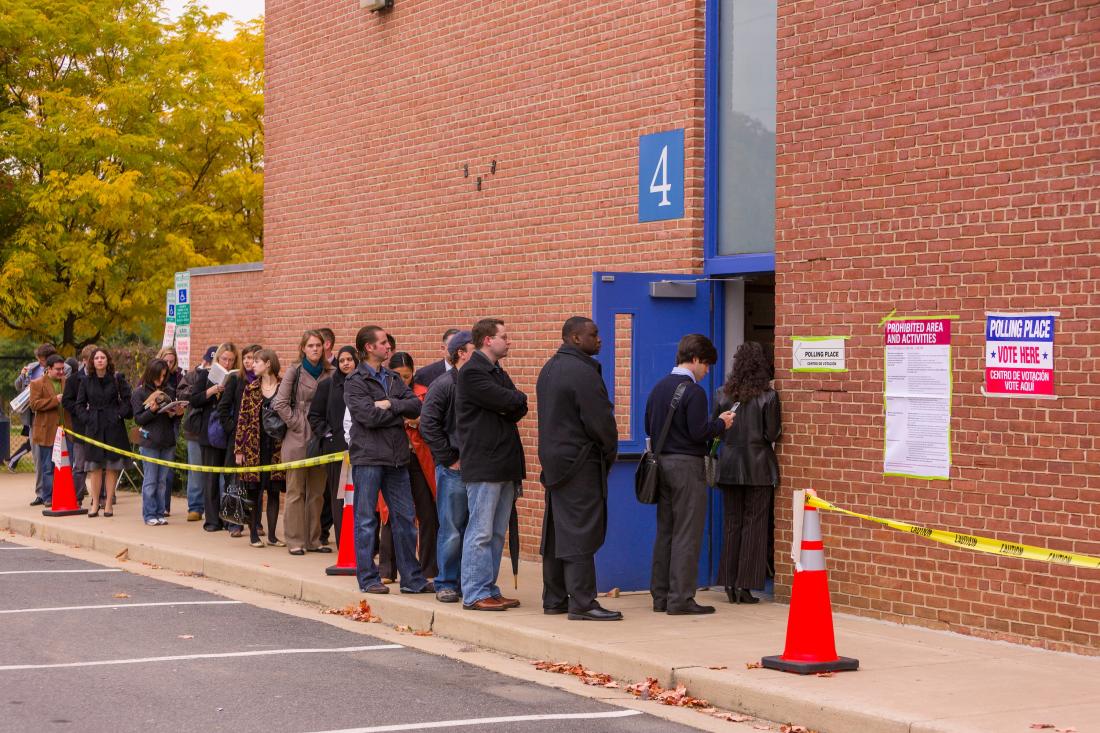Do Phone Calls Increase Voter Turnout in the United States?
- Voters
- Electoral participation
- Voter Behavior
- Nudges and reminders
Political campaigns and organizations are increasingly using methods such as television, direct mail, and telephone to mobilize voters. Researchers measured the impact of receiving phone calls on registered voters’ likelihood of voting in general elections in the United States. The study found that non-partisan, get-out-the-vote (GOTV) phone calls had no effect on voter turnout. The authors offer several potential explanations for the lack of effect: the election was already a relatively high-turnout election, the phone message was non-partisan, and the phone message was delivered by a commercial phone bank in a routinized, perfunctory manner.
Policy issue
Telecommunications provide an inexpensive and targeted means of voter outreach for political campaigns, particularly when combined with publicly available demographic and political information. However, there are only a handful of studies that analyze the impact of voter contact on voter turnout, few of which actually distinguish between telephone contact and other forms of voter outreach. Despite the effectiveness of personal canvassing in voter mobilization, campaigns have become increasingly dependent on more impersonal mobilization techniques like telecommunications. This study differs from previous studies of voter turnout in that it assesses the effect of telephone communication on voter turnout during a high-turnout general election rather than a low-turnout special election, and it uses a nonpartisan get-out-the-vote message rather than a partisan one. Does nonpartisan telephone outreach increase voter turnout during a high-turnout election?
Context of the evaluation
This study was conducted during the 1998 General Election in West Haven, Connecticut, which has a population of 54,000. During midterm years, Connecticut conducts state elections as well. Thus, in addition to a congressional election, voters also participated in elections for several statewide offices including governor, state senator, and state representative.

Details of the intervention
Researchers conducted a randomized evaluation in order to study the impact of nonpartisan phone contact on voter turnout. A sample of 17,100 registered voters was assigned to treatment and control groups. A Washington, D.C.-based political consulting firm was hired to carry out the phone calls in an attempt to simulate realistic circumstances. Accordingly, the phone calls sounded as though they were coming from a large firm rather than a local volunteer. Among the treatment group (those who received phone calls), a portion received a GOTV message while another portion received a blood donation message, to distinguish between the content of the phone call and simply receiving a phone call. The control group did not receive phone calls. Within the subset of individuals receiving the GOTV message, three different versions of the message were used: one using close elections to encourage voter turnout, another referencing a sense of civic duty, and the last appealing to sentiments of neighborhood solidarity. For all three groups, a random subset of individuals was also asked for a verbal commitment to vote. Phone calls were made in the three days leading up to the election, including the day of the election.
Results and policy lessons
Researchers found that phone contact had no significant effect on voter turnout. Turnout rates for the individuals receiving the GOTV phone calls, individuals receiving blood drive phone calls, and individuals receiving no phone call were approximately the same. Individuals within the treatment group who could be contacted turned out to vote at higher rates than individuals who could not be successfully reached by phone; however, the authors find that this difference stems from preexisting differences between individuals who could be contacted and individuals who could not be contacted that are independent of the phone calls themselves. The randomly assigned treatment group did not turn out at higher rates than the randomly assigned control group. Moreover, voters reached with a GOTV message did not vote at higher rates than those reached with a message that encouraged blood donations. The request for a verbal commitment to vote from a portion of the treatment group also had no significant effect on voter turnout. The results of this study were replicated with no substantive change and published in the ANNALS of the American Academy of Political and Social Science in 2005.
The authors offer several potential explanations for the discrepancy between their findings and those of previous studies. This study included a larger sample size than several earlier ones and used a nonpartisan message. Furthermore, this field experiment had lower contact rates than previous studies—one possible theory is that individuals who are difficult to contact may react more strongly to contact. The effect of telemarketing may also vary by population group. On a broader level, these results suggest a potential link between the shift away from personal canvassing and declines in voter turnout over time, meriting further study in order to understand when and whether phone contact can influence voting.
